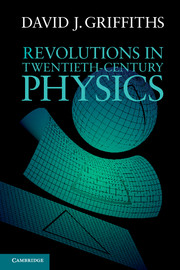2 - Special relativity
Published online by Cambridge University Press: 05 December 2012
Summary
Classical physics, some aspects of which we discussed in Chapter 1, is – for the most part – comforting to our intuitions. You probably wouldn't have come up with Newton's second law (F = ma) on your own (after all, nobody did before Newton), but once it is on the table it feels right. It seems consistent with our everyday experience. Classical physics refines and perfects our intuitions, but it doesn't upset them. By contrast, the four revolutions in twentieth-century physics are wildly counterintuitive; they seem to contradict everything we thought we understood – everything we took for granted about the world. That is, in part, what makes them so interesting. But it also raises a recurring question: “If this is really true, how come I never noticed it before?” I hope you will keep a skeptical eye on that subtext, as we go along.
Einstein's postulates
Einstein published his Special Theory of Relativity in 1905. The special theory is not an account of any particular physical phenomenon; rather, it is a description of the arena in which all phenomena occur. It is a theory of space and time themselves. As such, it takes precedence over all other theories. If you were to propose a new model of elementary particles, say, the first thing to ask would be, “Is it consistent with special relativity?” If not, you have some fast talking to do. As Kant would say, special relativity is a prolegomenon to any future physics.
- Type
- Chapter
- Information
- Revolutions in Twentieth-Century Physics , pp. 39 - 68Publisher: Cambridge University PressPrint publication year: 2012



